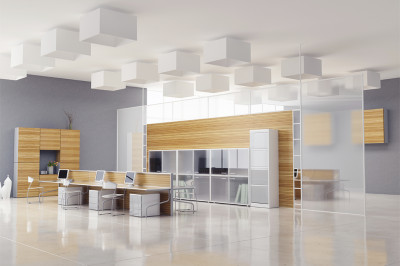“A country’s ability to improve its standard of living over time depends almost entirely on its ability to raise its output per worker.” – Paul Krugman, “The Age of Diminished Expectations”
Paul Krugman‘s comment has been quoted extensively over the past 20 years, and it is still as relevant now as it was then. Simply put: Improving productivity means raising output per worker. We can rephrase this quote and start thinking about organizational productivity:
An organization’s ability to grow revenue and profits over time depends almost entirely on its ability to improve productivity by raising revenue and profit per worker.
Plus: Five problems with flexible working | How education is subverting the workplace
In fact, in Australia since 2004 and 2005, multifactor productivity has recorded negative growth in most years. If this is a long-term trend, what can we do to reverse it? And what role does real estate play in a strategy to improve productivity?
Gross domestic product per combined unit of labor and capital. Reference year 2009 to 2013 = 100. (ABS Australian System of National Accounts)
For knowledge-based industries in particular, revenue and profit per worker are really the only ways to measure productivity. Some of these types of organizations view real estate costs as overhead that should be minimized by any means possible. But we should be asking: “How can my real estate contribute to increased productivity for my organization?” and “What role can a workplace have in raising productivity?”
Also: Collaborate and share or die | Big businesses watch their backs!
You can look at it from a raw cost point of view: “Just make my rent and fit-out costs as low as possible.” However, provided you don’t go crazy, these costs really aren’t where the big gains are. Typically, CFOs aim to have real estate costs targeted at 3 to 4 percent of revenue. If you cut a deal where you can reduce your rent by, say, 10 percent, you are saving 10 percent of 4 percent revenue! If I deliver my workplace for 10 percent less, that’s 10 percent of your initial capital spend written off over the life of the lease.
Yes, you are saving money. But are you increasing productivity? And what if the cheapest building and cheapest fit-out gives you a workplace that nobody wants to work in and just doesn’t support the work that your organization does?
Of course, every little bit counts, and we owe it to our firms to get the best possible rental and fit-out deal. But the bigger wins happen when you start to look at real estate strategically and as part of your overall platform to boost productivity.
So how do you make a more productive workplace? Here are three ideas to consider:
1. Make sure the area you are renting is no more and no less that you really need
Do the research. What do your workers actually do during a typical day? What sort of space do they need to efficiently carry out their work? Exactly how many people need to be accommodated in a workplace? Are there workers who don’t need a permanent desk? Are there workers who would perform best with a permanently allocated desk? Typically, when you develop a robust, research-based workplace strategy, you can save 10 to 20 percent of your current real estate footprint. This sort of saving trumps rental and even fit-out costs almost every time.
2. Innovate or die
The truly successful companies of the 21st century have innovation as the absolute core of their business. Innovation is all about collaboration, attracting and connecting the right people, and encouraging creativity. Creating a workplace that encourages connections and collaboration, allows thinking space and supports creative thinking really starts to boost productivity.
3. Use your workplace design as a recruitment tool
Productive people are gold. To recruit the best people, the workplace should say to your target audience, “This looks like the sort of place I want to work.”
All this is to say that a business strategy to boost productivity has to be multifaceted and ignores the role of real estate at its peril.
Find out more about how workplace strategy can boost an organization’s performance. For more insights and discussion, follow our Colliers Collaboration page on LinkedIn.
As National Director of Workplace Strategy and Design for Colliers International in Australia, Peter is a workplace strategist and qualified architect with over 25 years’ experience in workplace and base building design, working with clients ranging from Bauer Media Group, AT Kearney, Ricoh, ANZ Bank and Citrix.

 Colliers Insights Team
Colliers Insights Team


 Ron Zappile
Ron Zappile
